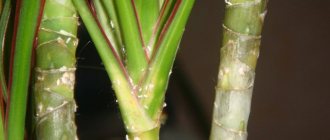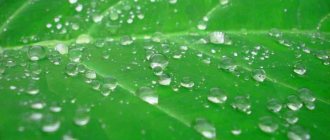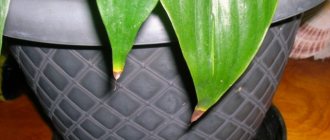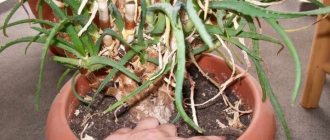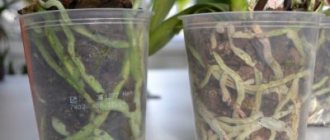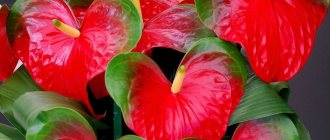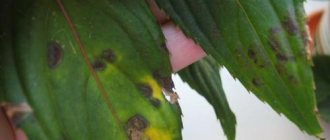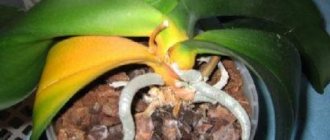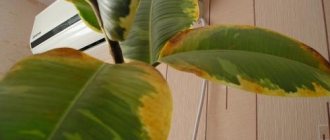Chinese hibiscus (Hibiscus rosa-sinensis) is a heat-loving species of the Hibiscus genus from the Malvaceae family. In Russia and neighboring countries, this is a popular indoor plant, better known as the Chinese rose. It is a large evergreen shrub with quickly woody branches, shiny dark green plates, and large flowers that look like bright gramophones. Care is simple; many owners consider the plant to be problem-free and pay little attention to it. But when the leaves of a Chinese rose turn yellow and fall off, you will have to look for the source of trouble.
Why do they dry out?
Leaf tips
As a rule, an ailment associated with drying of hibiscus leaves occurs in winter . Provoking factors are insufficient lighting and dry air.
The problem is not dangerous to the life of the plant, it only loses its attractiveness, but this, even if it is a seasonal problem, should not be ignored.
The following measures will help restore the aesthetic appearance of the flower:
- Organization of artificial lighting.
- Frequent spraying.
- Periodic water procedures in the shower.
In addition to lack of moisture and lighting, the reasons for the appearance of dry tips on hibiscus leaves can be:
- Pests . It is necessary to carefully examine the shoots and the underside of the leaves of the plant to detect traces of parasite activity. If they are found, treat with insecticides. Pests and diseases of hibiscus are described here.
- Cramped pot . If roots appear from the drainage holes, it’s time to replant the hibiscus.
- Overdried earthen lump. The watering schedule needs to be adjusted.
- Too hard water used for irrigation. The flower should be moistened only with settled water.
Leaf diseases are discussed here.
Stem
A dried hibiscus trunk signals that the soil is infested with pests.
To solve the problem you need:
- Dig up the plant.
- Carefully inspect the roots.
- If pests are visible to the naked eye, remove them mechanically; if some of the roots are affected, cut them off completely to healthy tissue. Rinse with a weak solution of potassium permanganate.
- Transplant the plant into a new container with fresh substrate.
Roots
Dried roots can be observed in plants that have been in a cramped pot with a dry earthen ball for a long time.
The following resuscitation actions can be taken:
- Moisten the soil in small portions for several days.
- Remove the flower from the pot, carefully remove the soil along with dead roots.
- Transplant the hibiscus into a new container suitable in volume for the root system.
Roots may dry out if the soil is too cold. In this case, you need to move the pot to a warmer room.
Read in our articles about curling, yellowing and falling leaves and other diseases, about dropping buds.
Natural causes
Hibiscus does not have a pronounced dormant period, but at the end of the season the plant sheds some of its leaves. This is normal in the following cases:
- Chinese rose over 2 years old;
- yellowing and flying vegetative organs make up no more than 5-10% of the total mass of leaves.
Each plate does not live indefinitely. At home, even with proper maintenance, the leaves age, turn yellow and fall off within 2-3 years.
This usually occurs in the fall, starting from the base of the lower branches of the older order. In spring, new vegetative buds bloom on young growth, so that the volume of green mass constantly increases.
But sometimes the Chinese rose drops its leaves at the beginning or middle of the season. If this is not widespread - 1-2 plates have fallen, the plant looks healthy, blooms, there is nothing to worry about. But when real leaf fall begins, you need to urgently look for the cause.
Photo
Here you can see a photo of the plant:
Dropping unopened buds
Some gardeners complain that hibiscus begins to drop unopened buds. Most often, the reason why the plant does not want to bloom, and its unopened bud falls off, is due to the fact that the care of the Chinese rose is not organized correctly.
If a hibiscus drops unopened buds, there is reason to start worrying; there may be several reasons:
- too low or high temperature - so that the plant does not begin to shed buds and can bloom normally, it must grow at +23 degrees in summer and +18 degrees in winter;
- direct exposure to sunlight - they burn the plant, and the still unopened bud begins to dry out;
- too frequent watering, causing rotting of the root system;
- poor drainage;
- lack of feeding - lack of nutrients in the soil is stressful for the Chinese rose;
- frequent movements of the plant - hibiscus response to stress - falling buds.
What to do if the flower is completely dry?
You can try to bring a dried plant back to life by taking the following measures::
- Completely remove all dried leaves.
- Trim the trunk as much as possible; if there is a small piece of undried stem left, cut it to its level.
- Replant the plant using the transshipment method.
- After moving the hibiscus to a new container, moisten the soil.
- Spray the plant with Epin.
- Cover the planting with a bag, thus creating a mini-greenhouse.
- The bag must be periodically removed for repeated treatments with a growth stimulator, and then returned to its place.
- In such conditions, hibiscus should be kept for at least two weeks. The success of the procedure will be indicated by the appearance of young shoots.
Hibiscus - Chinese rose
The first information about the plant dates back to Ancient Greece. By the way, the Mediterranean climate is a favorable environment for Chinese roses! Its habitat covers countries with tropical and subtropical climates. For example, on the streets of Vietnam or Thailand, a rose feels great! The flower belongs to the mallow family, and its genus includes not only shrubs, but trees and even herbs; in total there are up to 500 different species.
In the places where it originally grew, its flowers were woven into the hair of local aborigines, perhaps that’s why the plant was nicknamed “the flower of beautiful women”! Initially, Chinese hibiscus was a tree up to 5 meters high, but for indoor growing, breeders developed smaller varieties. And, although the rose allows you to admire its flowers for only one day, the flowering period can last for months! And double-shaped flowers will delight you for up to three days.
Do you know? In Malaysia, the flower received the title of national. Its five-petalled variety is a symbol of the five commandments of Islam!
By the way, the species is not limited to just the Chinese representative. Native to Asia Minor, Syrian hibiscus is a shrub suitable for outdoor cultivation. However, only for the southern strip of Russia. After all, in a short summer, it simply does not have time to bloom! Its flowers are often confused with mallow.
There is another species that is sometimes called a weed, the hibiscus trifoliata. A flower up to 80 cm high has become a favorite of the African continent, and grows on its own in pastures and wastelands. Perhaps that is why he received such an offensive nickname!
city troychaty
Syrian
Dissected hibiscus - this beautiful species has received the name “princess earrings”. It is shaped like a bell with curved petals that resemble the wings of an exotic bird! It comes from Brazil, grows in coastal areas or tropical forests, and is suitable for home gardening.
g. dissected petal
Do you know? The plant is edible! The flowers are used in tea, the leaves are added to salads, the seeds are used for confectionery purposes, and the ripe fruits are highly valued for making jams, compotes and even soups.
Sudanese rose
By the way, the famous hibiscus tea has nothing to do with the indoor rose plant we are used to! The raw material for it is the calyxes of Sudanese hibiscus flowers, which increase in size after flowering. Unlike its relatives, this species is distributed mainly in Arab countries, especially in Egypt and Sudan due to climatic preferences.
✿
Caring for a houseplant at home
- Provide the flower with diffused light.
- Carry out periodic spraying.
- Keep the plant warm and avoid sudden temperature changes.
- Conduct transplantation on time.
- Provide abundant regular watering in spring and summer and monitor its moderation in winter.
The exotic, handsome hibiscus cannot be called very whimsical in its content . Following simple rules of care is useful not only for the plant, but also for its owner, as it helps to avoid the hassle of urgently eliminating defects and diseases.
Infectious diseases and pests
Like most tree crops, Chinese hibiscus is a vigorous plant. But insects or infections can become a real problem, especially for weakened specimens.
Hibiscus pests
The bush must be inspected regularly in order to promptly detect infestation with insects or mites (these are arachnids). They drink cell sap from vegetative organs, which causes the leaves to turn yellow and eventually fall off.
Hibiscus suffers from pests:
- The scale insect looks like growths covered with a waxy coating;
- the mealybug is inactive, likes to settle in the axils of leaves, where it forms nests similar to cotton wool or saliva;
- aphids adhere to young vegetative organs, secrete a sticky secretion - a nutrient medium for disease-causing fungi and bacteria;
- the spider mite is not noticeable to the naked eye, it settles on the back side of the plates, covering it with a thin web;
- the whitefly becomes a real disaster in greenhouses, greenhouses, it flies, its body is covered with a powdery coating;
- thrips run and jump well, prefer unopened buds, but if they are “over”, they suck the juice from the plates.
When the leaves of a Chinese rose turn yellow and fall off due to pest infestation, the bush must be treated with an insecticide. Actelik is usually used to treat indoor plants - it has an acaricidal effect and is suitable not only for killing all insects, but also mites.
Video
Sources
- https://cvetokmir.ru/pochemu-u-gibiskusa-opadajut-butony.html
- https://flower96.ru/sadovye/u-gibiskusa-opadayut-butony-prichina.html
- https://viridarus.ru/drugoe/u-gibiskusa-opadayut-neraskryvshiesya-butony-prichiny-chto-delat-s-rasteniem.html
- https://vdnh-nv.ru/sad/u-gibiskusa-opadayut-butony-prichina.html
- https://alt-zem.org/tsvety/pochemu-gibiskus-sbrasyvaet-butony.html
- https://podokonnik.temadnya.com/1318872962196572567/pochemu-u-komnatnogo-gibiskusa-opadayut-butony/
- https://KomnatnieCveti.ru/komnatnye/u-gibiskusa-opadayut-butony.html
- https://tripchik.ru/v-komnate/gibiskus-opadayut-butony.html
- https://sadovnic.su/yagody/pochemu-gibiskus-sbrasyvaet-butony.html
- https://vashcvetok.ru/vyrashhivanie/ne-tsvetet-gibiskus
- https://nikodimov.ru/cvety-doma/pochemu-gibiskus-sbrasyvaet-butony.html
- https://flowers-republic.ru/komnatnye-tsvety/pochemu-gibiskus-sbrasyvaet-butony.html
- https://mvazonchik.ru/pochemu-u-kitajskoj-rozy-opadajut-butony.html
- https://kaktys.club/bolezni/pochemu-gibiskus-sbrasyvaet-butony
- https://vrn-agroservis.ru/gibiskus/pochemu-gibiskus-sbrasyvaet-svoi-neraspustivshiesya-butony.html
Prevention
There is no unique way to stimulate flowering. It is important to fulfill several requirements:
- Careful care is needed, regular replanting into fresh soil and a suitable container in which the roots will not be crowded.
- It is also important to regularly treat the plant with special insecticides to prevent pest infestation.
- It should be remembered that hibiscus is very sensitive to frequent movements. The flower pot, especially before and during flowering, should be moved as little as possible.

